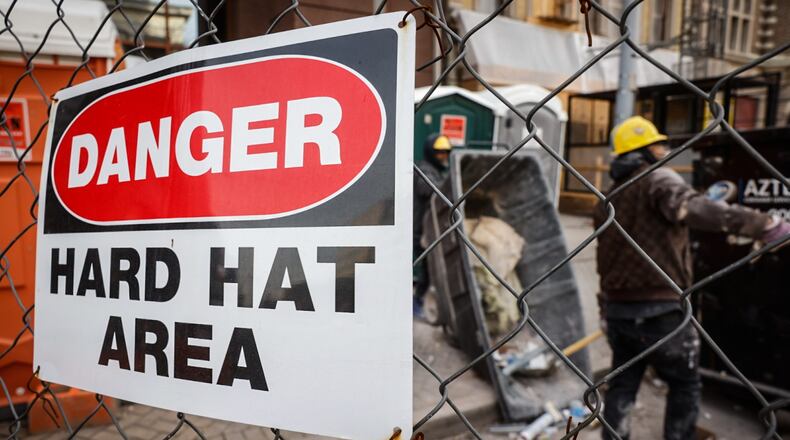“In the last seven years, Ohio’s rates of fatal occupational injuries have been lower than the nation and lower than most of our neighboring states,” said Kim Norris, a spokesperson with the Ohio Bureau of Workers’ Compensation. “This reflects ongoing investments in workplace safety through providing research, grants, training and education and consultative services and partnering with employers to adopt a culture of safety.”
Worker deaths
About 153 workers died on the job in Ohio in 2022, which was an 11% decrease from 2021 (171 deaths), according to data from the Census of Fatal Occupational Injuries from the U.S. Bureau of Labor Statistics. The data is released on about a one-year lag.
2022′s workplace death count in Ohio was the fourth lowest in the last 30 years.
There were 117 workplace deaths in Ohio in 2020, which was a record low during the start of the COVID pandemic, according to the bureau’s data, which goes back to 1992.
Ohio lost about 884,000 jobs in the first couple of months of the pandemic, and the state did not fully recover those employment losses until more than three years later.
Early in the pandemic, state officials issued stay-at-home orders and many people worked remotely and many employers shut down or scaled back operations.
The second fewest workplace fatalities occurred in 2009, during the Great Recession. After the housing bubble burst, many people were laid off and many employers went dark.
Fewer people working means fewer opportunities for workplace injuries.
Nationwide, employers recorded 5,486 fatal work injuries in 2022, which was a 5.7 percent increase from 2021.
Causes of death
In 2022, Ohio’s fatal work injury rate was 3 fatalities per 100,000 full-time equivalent (FTE) workers. The state’s rate had been 3.4 deaths per 100,000 FTE workers in 2021.
The Buckeye State’s fatal injury rate was the 12th lowest in the nation.
Wyoming had the highest rate (12.7). The Cowboy State has a high concentration of jobs in dangerous fields like natural resources and mining and oil and gas extraction.
Rhode Island had the lowest fatal injury rate (1.4).
In Ohio, transportation incidents were the leading cause of occupational death in 2022 (60 fatalities).
Contact with objects and equipment accounted for 26 deaths, while falls, slips and trips also killed 26 workers.
Exposure to harmful substances or environments took the lives of 21 workers in Ohio, while violence and other injuries by animals or people killed 14 people.
Fallen workers
Ohio has made significant progress in recent years to improve workplace safety, but dangers still exist, said Chan Cochran, chair of the board of directors for the Ohio Bureau of Workers’ Compensation.
“Whenever there is a loss of life on the job, it’s a reminder for all of us to redouble our efforts, to never rest and to honor their memories by keeping safety at the forefront of what we do,” Cochran said during the Bureau of Worker’s Compensation’s 13th annual Fallen Workers Memorial, held in August.
Officials say there continue to be too many preventable on-the-job deaths.
Norris said the Bureau of Workers’ Compensation targets some of its services for high-risk and high-hazard industries to mitigate risks and help workers remain safe.
“While it is encouraging to see a reduction in the number of cases, our laser focus remains assisting employers and workers in Ohio in adopting a culture of workplace safety to prevent injuries from happening in the first place,” Norris said.
Private employers in Ohio saw a spike in nonfatal workplace injuries and illnesses in 2022, which was the first increase in years and the largest increase in at least a decade, according to a previous Dayton Daily News analysis.
Even so, Ohio’s nonfatal workplace injury and illness rate was significantly lower the national average.
About the Author



